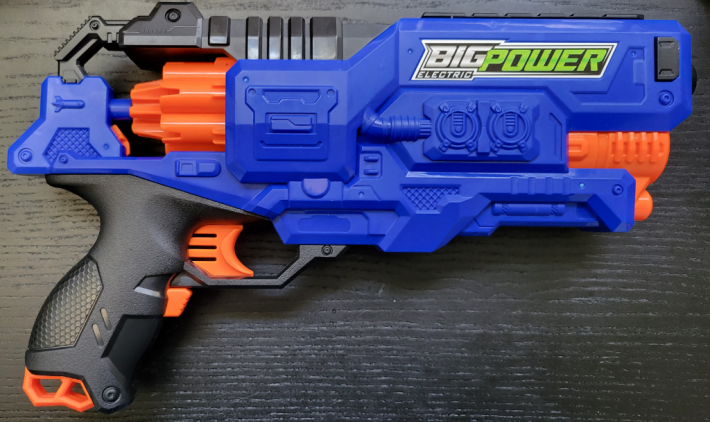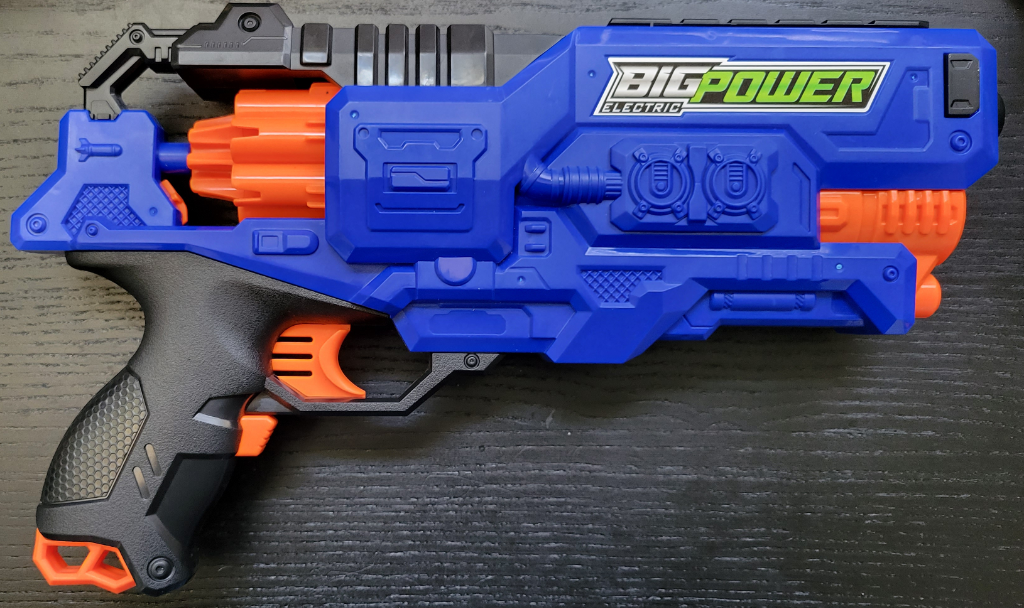
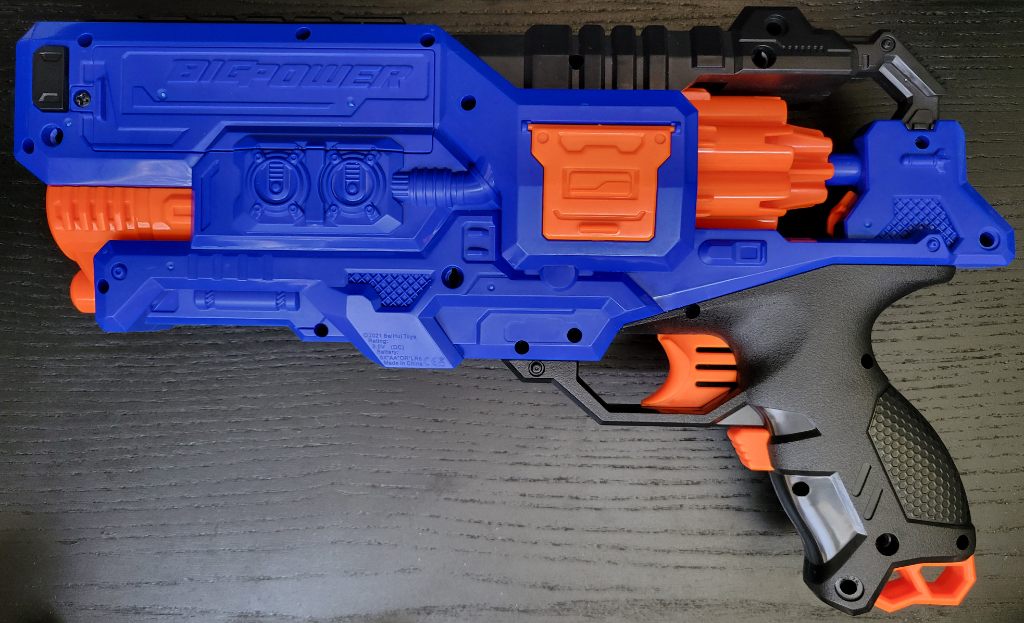
Here at the institute, we love weird, off-the-path blasters. With this review, we’ve struck gold. The BIG001 is clear what would happen if a Nerf Ultra Two and an Adventure Force Spectrum locked eyes across a crowded dance floor, fast-forwarded through a montage date sequence, and ended with family and friends looking lovingly in the hospital nursery window. We’re nicknaming it the Elitra Two because, well, we can.
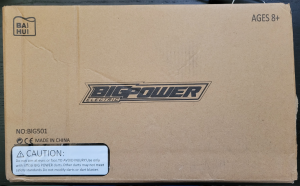
Our blaster arrived, well packed, in Bai Hui’s version of “Frustration-Free” packaging. The simple brown box listed the model number, the company logo, and the Big Power Electric ( Big Electric Power? ) logo. It survived the postal service – what more can we ask? Inside was the blaster and 24 darts. The darts are just short of elite length with a tall rubber dome. The rubber is not hard, but it is also not hollow in any way. This makes for ouches and potential damage to high crush flywheels. Best to toss them.
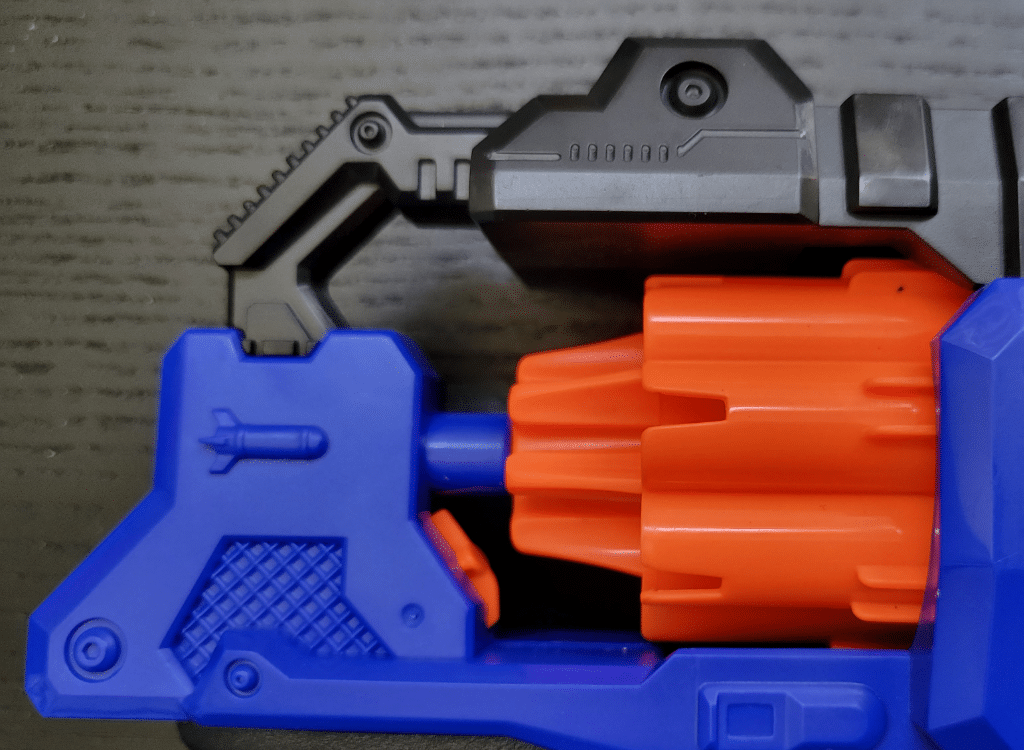
The BIG001 ( we’re going to assume there is no difference with the BIG501 recolor aside from the sticker and white for blue shell color swap ) is an oversized seven-shot elite flywheel pistol. From a distance, it looks like a straight-up lift of the Ultra Two with an elite dart conversion kit. Up close, you’ll see the Ultra series design aesthetic has been replaced by something that looks like it came from a recent Dart Zone sculpt. Gone are the undersized grip and smooth flat panels; in their place, we have a smattering of sci-fi greebles on a near symmetrical shell and a significantly improved grip. The cylinder and its well are lengthened and you’ll spot a few other small changes on a visual comparison. The top rail at the front of the blaster is an N-Strike rail and worked reasonably well in my small sample size. The plastic is solid with little give. The mold is clean and everything mates up nicely.
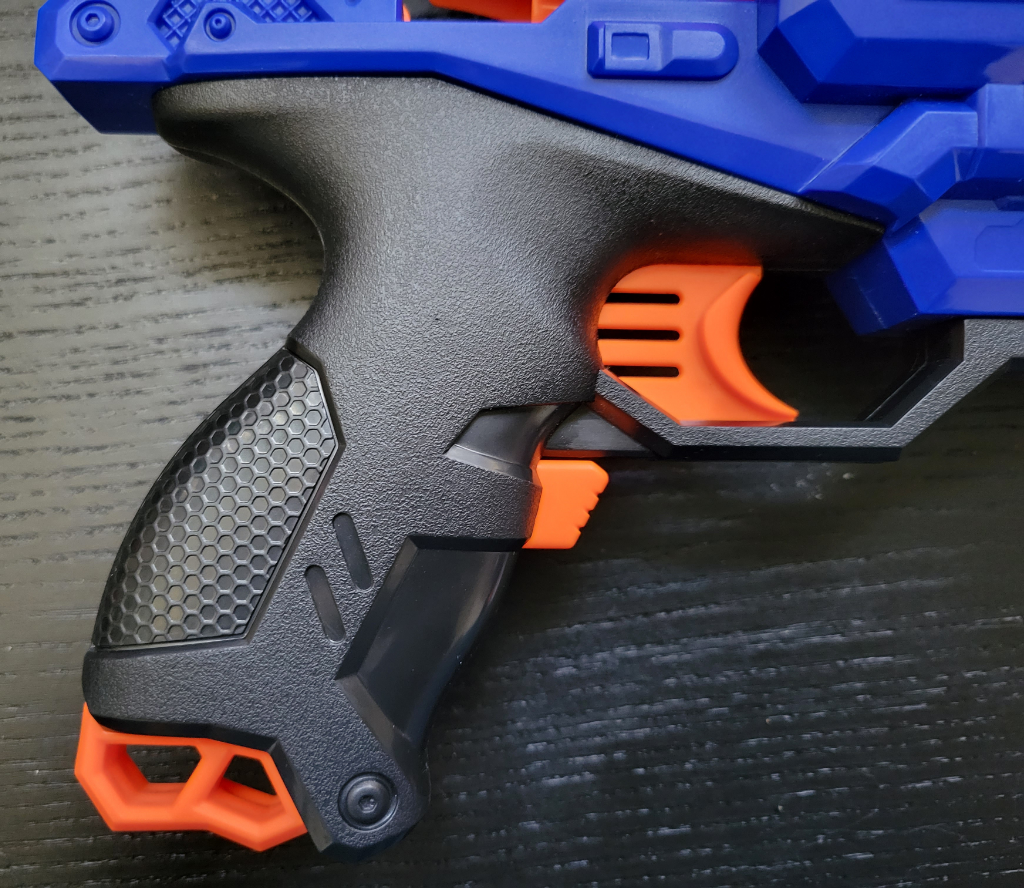
In terms of use, it is not a show-stopper stock. The six AA batteries in the nose make it a little front-heavy, but it is workable. The grip, as noted above, is better suited for an adult hand and has a much more comfortable sculpt while retaining the sling rings. The rev trigger is similarly improved and eliminates the Ultra Two’s tendency to pinch. The trigger has a slightly longer but very smooth draw that requires a full pull to fire. Stop short and you can rotate without pushing a dart through.
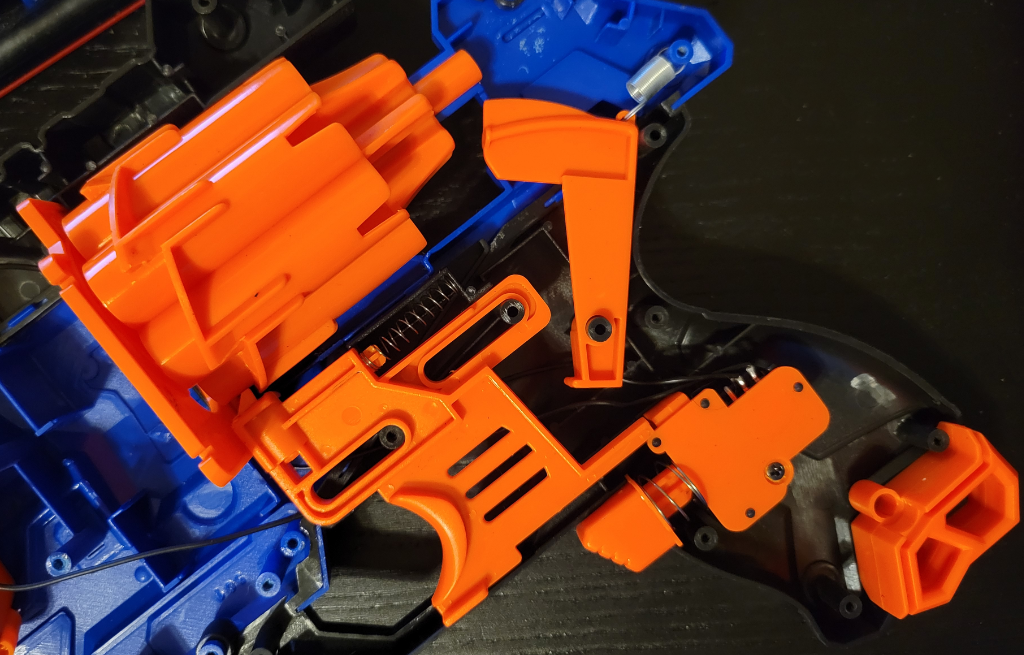
On the inside, we find an entirely different story. The internals are as different as possible and still be the same type of blaster. Every mechanism works differently. Quite the surprise. The flywheel cage clamshell halves are lined with foam to dampen the shell vibration. The wheels themselves are a concave design I’ve not seen before, with weight reduction applied via hole drilling and a style of edge cutting that makes the wheels like cogs from above. The outer diameter on the wheels is 38 mm and the inner concavity was between 40 and 41 mm. Our calipers were sadly not up to the task of precision here. The motors appear to be our favorite 130 can, though a replacement dry run is necessary to be certain. The wiring is sadly lightweight and the rev switch would need to be completely reworked or a MOSFET to update this to a LiPo.
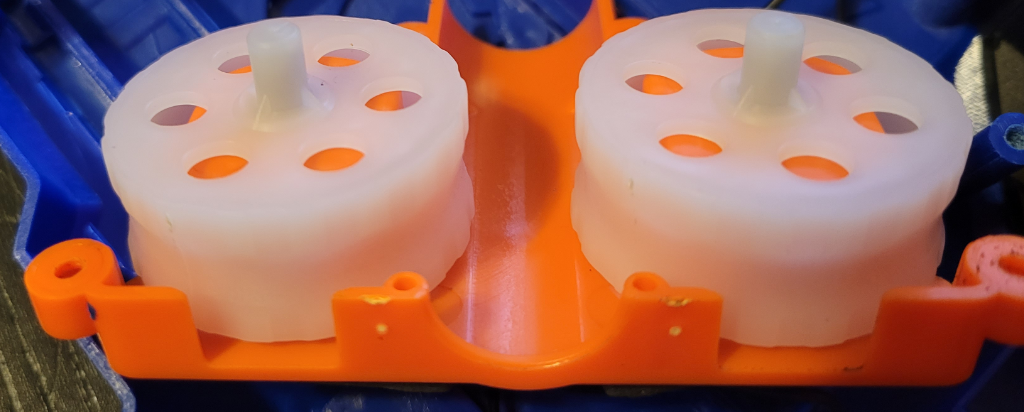
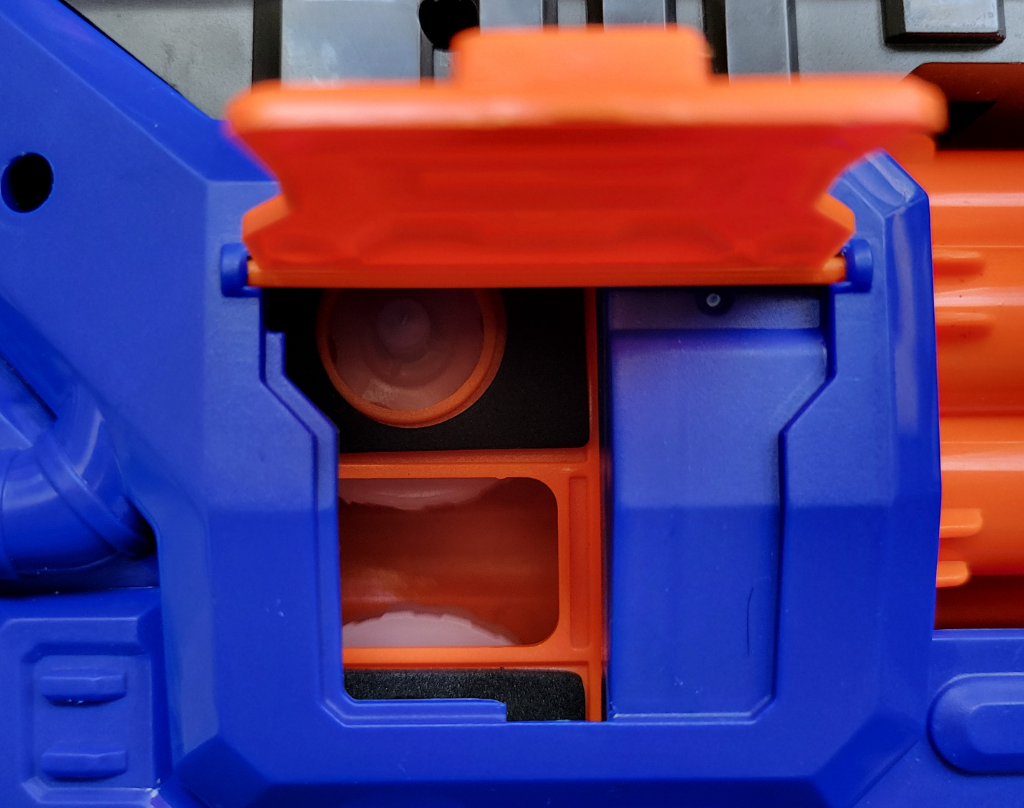
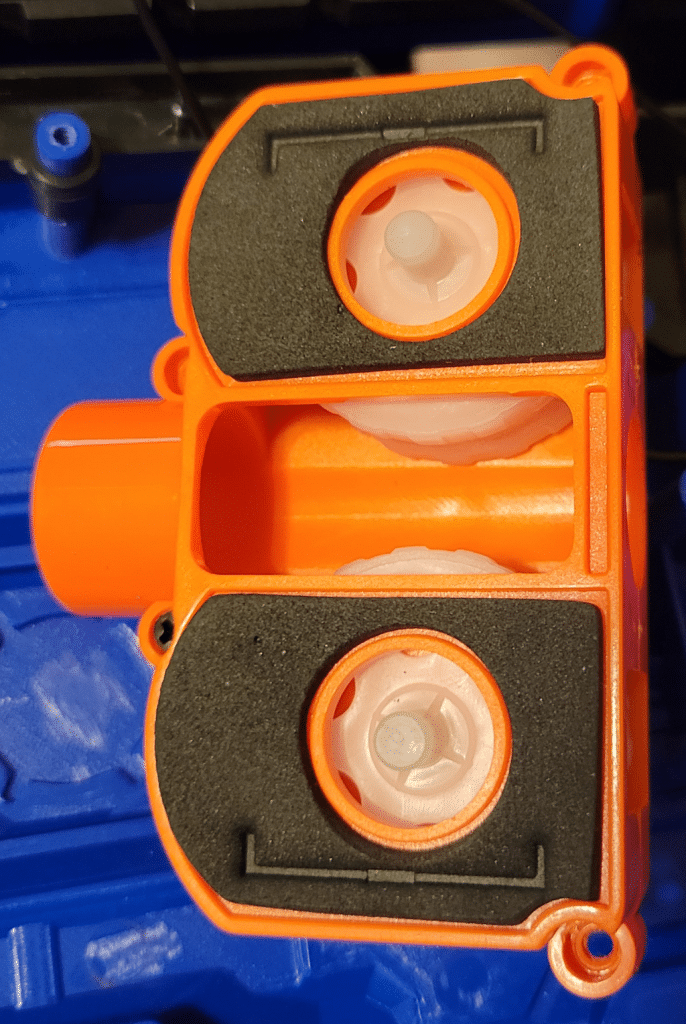
Summary
This blaster was a surprise, honestly. It feels good in the hand, is well constructed, and kinda fills a hole we didn’t know was there – excepting Ultra Two conversion kits. If you find it at what you feel is a reasonable price, it is highly recommended as a fun collection piece.
